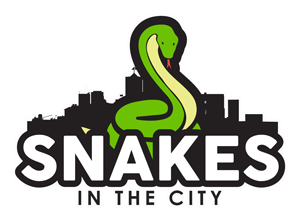Snake Bite First Aid
The implementation of current first aid is critical immediately after receipt of a bite from a snake. The “pressure-immobilisation” technique is currently recommended by all major health organisations within Australia. In an emergency dial triple zero (000) for an ambulance
A number of “do nots” are applicable to snake bite management. These are as follows:
- Do not try to catch or kill the snake – Statistically 95% of people that are admitted to hospitals for snakebite treatment have attempted to catch, kill or otherwise engage with the snake.
- Do not wash the bite site – In many cases the application of a Venom Detection Kit (VDK) may be applied to assist in identifying the snake responsible. Residual venom from the bite site is in this instance the most accurate means of identifying a snake where a specimen is not provided. This in turn means that the specific antivenin is administered rather than a polyvalent which carries higher risk of anaphylactic response.
- Do not give food or drink – In the event of significant delay or where dehydration is an issue small sips of water are acceptable. Alcohol especially should be avoided.
- Do not lance or suck the bite – Sucking the venom out may cause a secondary envenomation and is likely not to remove all the venom anyway.
- Do not apply a tourniquet– This method is ineffective and can result in severe injuries to the patient due to loss of circulation to the effected limb. When released the rapid progression of venom may cause an onset of symptomatic response that is highly accelerated.
- Do not unnecessarily move the person bitten– Application of first aid should be done as soon as the bite is received or when first noticed. Again unnecessary movement results in lymphatic activity which is what is to be avoided at all costs.
- Do not remove the bandages or splints at any stage after they are applied – Only when additional medical support under direction of a treating doctor should bandages be removed. Only when appropriate antivenom and resuscitation equipment is on hand should any first aid be removed.
Correct First Aid For Snake Bite:
Snake bites can occur anywhere on the body. Correct first aid for each of the following body divisions is provided. These include:
Bites to a limb correct first aid should be implemented as follows:
- Immediately immobilise and reassure the bitten person. Remember this is critical to the arrest of venom advancement. As a first aider it is important you remain calm to instil confidence in the person you are treating.
- Instruct a bystander to call 000 and immediately proceed with first aid procedure. In the event a bystander is not available utilise a speaker phone option so you can communicate to an emergency service whilst applying first aid.
- Use a broad compression or crepe style bandage beginning at the base of the limb. Application should be at the same pressure used to immobilise a sprain. Remember we are endeavouring to immobilise lymphatic movement not restrict blood flow. In the event no bandages are at hand the use of torn clothing, towelling or even panty hose can be used as an alternative. Cut clothing rather than remove it if required. Leave clothing on if immobilisation is going to be compromised.
- Continue the bandaging upwards until the bandage expires. Take the second bandage if required and ensure the entire limb is bandaged.
- Apply a splint to a leg or gently place the arm across the body in a sling. A splint must be a rigid elongate object such a stick, section of a fishing rod or tent pole and preferably extend the length of the leg. Fix the splint to the leg with another bandage, strips of material or shoe laces in such a manner that the leg is completely immobilised.
- Maintain complete immobilisation for the entire body as much as possible. Where possible assistance should be brought to the patient rather than having them subject to unwanted movement. In the event movement is necessary support the patient as much as possible.
Bites to a torso correct first aid should be implemented as follows:
The compression technique in this instance is varied due to the structure of the torso as opposed to an elongate limb.
- Immediately immobilise and reassure the bitten person. Remember this is critical to the arrest of venom advancement particularly in the case of a bite to the trunk or torso. As a first aider it is important you remain calm to instil confidence in the person you are treating.
- Instruct a bystander to call 000 and immediately proceed with first aid procedure. In the event a bystander is not available utilise a speaker phone option so you can communicate to an emergency service whilst applying first aid.
- Maintain firm consistent pressure be applied directly to the bite location.
- Maintain complete immobilisation for the entire body as much as possible. Where possible assistance should be brought to the patient rather than having them subject to unwanted movement. In the event movement is necessary support the patient as much as possible.
Bites to a head or neck correct first aid should be implemented as follows:
- Immediately immobilise and reassure the bitten person. Remember this is critical to the arrest of venom advancement particularly in the case of a bite to the head or neck. As a first aider it is important you remain calm to instil confidence in the person you are treating.
- Call triple zero (000) immediately.
- No first aid methodology is relevant to bites to the head or neck
- In this instance complete immobilisation is absolutely critical. Where possible assistance should be brought to the patient rather than having them subject to unwanted movement. In the event movement is necessary support the patient as much as possible.
